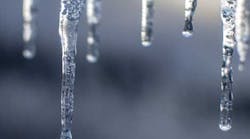Whether it's extreme temperatures, humidity, harsh cleaning agents or high degree of abrasion on cables, our five experts have guidance on what cables you should use to ensure reliability. As the Industrial Internet of Things (IIoT) continues to gain mindshare and acceptance, the roles of the cables, connectors and wires that move the data become more important.
What recommendations can you make for connectors that need to operate in extreme environments?
PTFE low-friction, resistant to caustic agents:
- silicone-free
- operational temperature fixed and moving: -60…200 °C.
Molded silicone tube sealed tube, resistant to ingress, spatter resistance on nut:
- jacket temperature fixed: -60...180 °C
- cable temperature fixed: -50...80 °C.
Stainless steel braid—abrasion resistant, high mechanical durability:
- jacket temperature fixed: -25...80 °C
- cable temperature fixed: -50...80 °C.
Fiberglass: high temperature jacket, nonflammable, nonfraying:
- jacket temperature fixed: -60…400 °C
- cable temperature fixed:-50…80 °C.
Silicone cable abrasion and mechanical shock resistant, thermal shock resistant:
- operational temperature fixed: -40…200 °C.
PVC coated steel armor: crush resistant, high mechanical durability.










